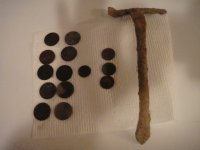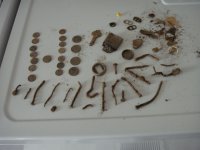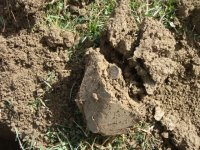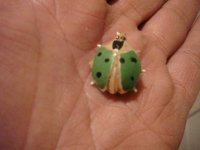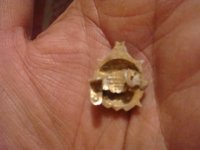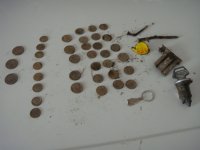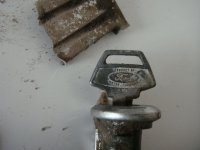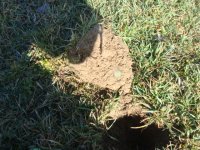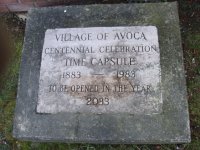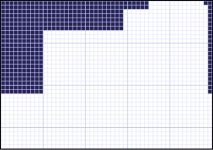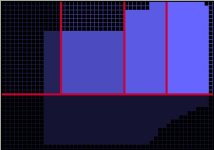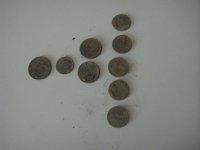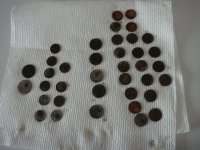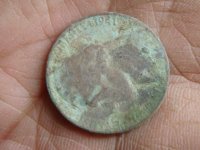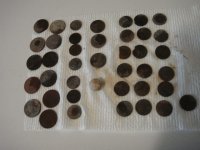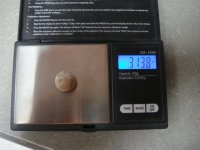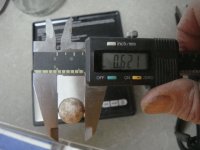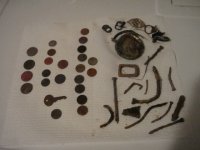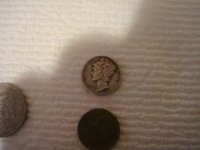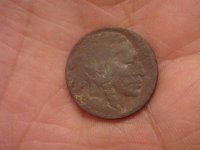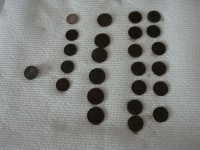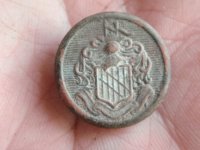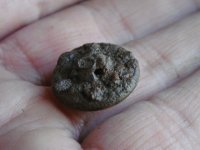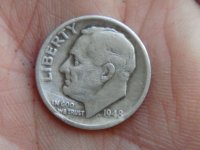You are using an out of date browser. It may not display this or other websites correctly.
You should upgrade or use an alternative browser.
You should upgrade or use an alternative browser.
CTX 3030 programs
- Thread starter bibelot
- Start date
Rattlehead
Forum Supporter
I haven't checked this thread in a while but looks like you're doing really well with the CTX bibelot! 

Rattlehead
Forum Supporter
Attached below is my go-to program for hunting in heavy iron.
Its actually a combination of two of my favorite programs. Trashy Park and Tadpole. I call it Dirty Frog. The idea behind it is to get pretty much all US coins and most medium to large jewelry. Fairly open pattern to help prevent masking. I usually run this with ferrous-coin, but if running high trash separation, I would lower the bottom tone break down a few notches.
It will knock out most of the annoying small iron in the bottom righthand corner so that the target ID isn't so jumpy. It also knocks out everything on the back side of nickels. You will miss some tiny rings or other small jewelry, but the trade off is that it gets rid of most small foil and other junk items. Even though the right hand side of the nickel notch is open, you'll still be able to ID nickels by the tone due to the way the bins are set up. Different tones for nickels, indians through wheats, and then the highest tone for silvers or clad dimes and quarters.
Using Ferrous-Coin separation, the machine tries to push good targets toward the 12 line, but I leave the upper right side open so that I will still get large silvers if I decide to switch to High Trash.
Settings are:
Mode: Combined
Separation: Ferrous-Coin
Response: Normal
Fast: ON
Deep: OFF
Seawater: OFF
I made a couple of minor changes to this. Turned recovery fast OFF as it seems to give a more stable TID. FE/C0 line moved down to 23. Minor adjustments to pattern 2.
Dirty Frog
Settings are:
Mode: Combined
Separation: Ferrous-Coin
Response: Normal
Fast: OFF
Deep: OFF
Seawater: OFF
Attachments
I haven't checked this thread in a while but looks like you're doing really well with the CTX bibelot!
Do you think the Conductivity reading and depth determines where the FE falls to an extent ?I notice lower conductor numbers tend to fall opposite direction than high conductors ?I've pulled more nickels by opening up the lower FE line from the FE 12 line. I've never seen a nickel read 13.12, 14.12 yet but I've pulled nickels with a 07.09-07.14 ID number due to depth and mineralization in the soil maybe ?
Rattlehead
Forum Supporter
Do you think the Conductivity reading and depth determines where the FE falls to an extent ?I notice lower conductor numbers tend to fall opposite direction than high conductors ?I've pulled more nickels by opening up the lower FE line from the FE 12 line. I've never seen a nickel read 13.12, 14.12 yet but I've pulled nickels with a 07.09-07.14 ID number due to depth and mineralization in the soil maybe ?
Even though the CTX and Etrac are known for better ID than most other machines, from what I've seen depth will still effect the numbers. Other things such as wear on coins, variations in composition materials (ie V will generally read lower than buffalo), orientation in the ground, separation mode, and other targets being nearby can also effect TID. Even though most nickels seem to hit around 12-12 to 12-13 for me, I've dug plenty that read lower and a few that read higher. I've dug silver dimes that read like zincs too. I don't put a lot of weight on the FE numbers as long as it's in the general range of the pattern I'm using.. I pay more attention to the CO numbers.
Sent from my iPhone using Tapatalk
adamBomb
Senior Member
Even though the CTX and Etrac are known for better ID than most other machines, from what I've seen depth will still effect the numbers. Other things such as wear on coins, variations in composition materials (ie V will generally read lower than buffalo), orientation in the ground, separation mode, and other targets being nearby can also effect TID. Even though most nickels seem to hit around 12-12 to 12-13 for me, I've dug plenty that read lower and a few that read higher. I've dug silver dimes that read like zincs too. I don't put a lot of weight on the FE numbers as long as it's in the general range of the pattern I'm using.. I pay more attention to the CO numbers.
Sent from my iPhone using Tapatalk
Agreed. Although I have found both to be off sometimes, especially on the deeper targets even when I slowly sweep over the target several times. I only beach hunt so sand, salt, shells, etc. always tend to add to the number in one way or another.
NetHunter
Full Member
Are you still mainly using the 6" now bibelot?
TexasCTX3030 - Mario (NetHunter)
Sent from my iPhone using Tapatalk
TexasCTX3030 - Mario (NetHunter)
Sent from my iPhone using Tapatalk
No, I'm not. I have been deciding on whether to sell it or not.Are you still mainly using the 6" now bibelot?
TexasCTX3030 - Mario (NetHunter)
Sent from my iPhone using Tapatalk
coin whisperer
Elite Member
The best settings for the ctx to outhunt other detectorists not using a ctx is well.... the power button
Sent from my iPhone using Tapatalk
Sent from my iPhone using Tapatalk
No nascar race to watch so I went back and hunted for a bit more. I haven't even put a dent in it yet. A lot of iron feeding back but I'm getting use to it. Nice that the coins are deep so the plug is not tampered with once its pulled. The dirt comes out upon an old shirt and pours back in without a trace....